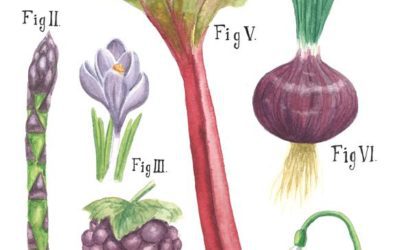When you think about baseball spring training, Ann Arbor is about the last place that comes to mind. The Michigan baseball team is lucky every year if half its early season home games don’t get snowed out. But in 1981, there was a second “spring” training in August.
A baseball strike halted the 1981 season over a dispute about free agency. Team owners wanted to require that a team signing a free agent pay compensation to the team whose player it took. The players saw this hurting their value in free agency–still a pretty new institution after the reserve clause that bound a player to a team was struck down in 1975. Nearly 40 percent of the season was wiped out before the two sides finally came to an agreement: after a week of training, the season would restart on August 9.
The Cincinnati Reds, though, had a problem: their home at the time, Riverfront Stadium, was hosting a jazz festival that week. So the team came to Ann Arbor to train.
—
That was only possible because Bo Schembechler got sick of losing the Rose Bowl. The Wolverines lost in their first five trips to Pasadena under his leadership, and he laid part of the blame on the teams having to spend two weeks training in California due to the winter weather back in Michigan. He thought the players lost their competitive edge after the first week.
So Michigan athletic director Don Canham raised a couple million dollars and built an indoor practice facility. Now known as the Bennie Oosterbaan Field House, it was completed on December 15, 1980. The team used it for a week before going for a shorter trip to California, where they beat Washington 23-6 to finally give Bo his first win in the Rose Bowl.
It was the field house–on top of Ray Fisher Stadium next door–that Reds president Dick Wagner cited as the reason the Reds chose to come to Ann Arbor. The Reds played on artificial turf at the time, and Bo’s practice facility let them replicate that. (Wagner is best known for his perplexing decision in 1978 to fire Sparky Anderson, to the benefit of the Detroit Tigers.)
It rained the first morning the Reds were in town, so they immediately made use of the field house. The players were excited to be in the football facility, and the Michigan Daily reported that third baseman Ray Knight asked manager John McNamara if they could play touch football. When McNamara said no, Knight asked if they could play ttackle instead.
The next day the Reds trained outside at Ray Fisher Stadium–and got to meet Ray Fisher. Before coaching the Michigan baseball team from 1921 to 1958, Fisher had pitched for the Reds on their 1919 World Series-winning team.
McNamara visited with Fisher in the stands and asked him how old he was. Fisher responded, “Well, I’m old. I was pitching when your players’ fathers were born.” Fisher passed away the following year at ninety-five.
—
The Reds brought several future Hall of Famers to Ann Arbor. Pitching coach Bill Fischer told the press he was only worried about one of his charges: the thirty-six-year-old Tom Seaver. Seaver was 7-1 on the season, but Fischer worried the two months off would take a toll on his aging pitcher. He needn’t have worried–Seaver again went 7-1 after the restart. It was the final All-Star year of his career. The team also still had several players remaining from its “Big Red Machine” heyday in the 70s–Johnny Bench, Dave Concepcion, and George Foster.
The Reds initially weren’t sure about letting the public see their workouts in Ann Arbor. But eventually not only did they allow people in, they let local schoolchildren climb up and station themselves on top of the left-field fence. Several hundred people attended the unexpected late-summer attraction each day.
After a week, play resumed. The Reds were 35-21 prior to the strike, just a half-game back of the first-place Los Angeles Dodgers in the NL West when play had stopped. That strong beginning was essentially wiped off the books, though, when the season restarted. The MLB declared each division would have a winner for the first half of the season and a winner for the second half of the season, resetting everyone’s record.
The Reds had a strong second half of the season too, going 31-21 and finishing second in the division, one-and-a-half games behind the Houston Astros. Their overall record for the year was 66-42, the best in the division, four games ahead of the Dodgers and six games ahead of the Astros. But because they didn’t win either half of the season, they got left home for the playoffs.
They wouldn’t return to the postseason until 1990. By then, they had an infield full of Wolverines.
—
Whether it had anything to do with the Reds’ training in Ann Arbor or not, there ended up being a shuttle of talent between Cincinnati and Ann Arbor during the 1980s. Barry Larkin, a graduate of Cincinnati’s Archbishop Moeller High School, led U-M coach Bud Middaugh’s teams to the College World Series in 1983 and 1984 and was named Big Ten Player of the Year in 1984 and 1985. The Reds drafted him in the first round that year.
Larkin’s eventual Hall of Fame career, spent completely with the Reds, was highlighted by winning the 1990 World Series. The third baseman that year was Chris Sabo, who played for Michigan from 1981 to 1983. And a lot of the time when shortstop Larkin threw to first base to get an out, Hal Morris was on the receiving end. He played for Michigan from 1984 to 1986.
A few times that season, the Reds’ infield was rounded out by Bill Doran at second, who played for Middaugh at Ohio’s Miami University before he followed Schembechler’s path to Ann Arbor. There aren’t too many coaches in the history of college baseball who can say a World Series-winning team had a starting infield made completely of their former charges.
—
For the first time since 1981, this year’s MLB season is again truncated. When the union and owners couldn’t agree on what the players would earn for a shortened season, the league unilaterally imposed a sixty-game schedule starting July 24.
This year, though, the teams are training at their home ballparks. The circumstances that kicked off the Reds-Michigan connection in 1981 may never be repeated. But in the 1980s, it paid great dividends for both parties.
—
from Calls & Letters, September 2020
“I enjoyed Tom Jensen’s piece on the Cincinnati Reds’ training here prior to the resumption of the 1981 season (I was there myself, as Booth Newspapers’ baseball writer), but he’s wrong about this season being the first since then that the ‘MLB season is again truncated,'” Jeff Mortimer emailed after reading our August “Then & Now” column.
“Baseball’s longest strike began on August 12, 1994 and lasted until April 2, 1995,” Mortimer pointed out, “cancelling the World Series for the only time since 1904 and delaying the start of the following season.”





